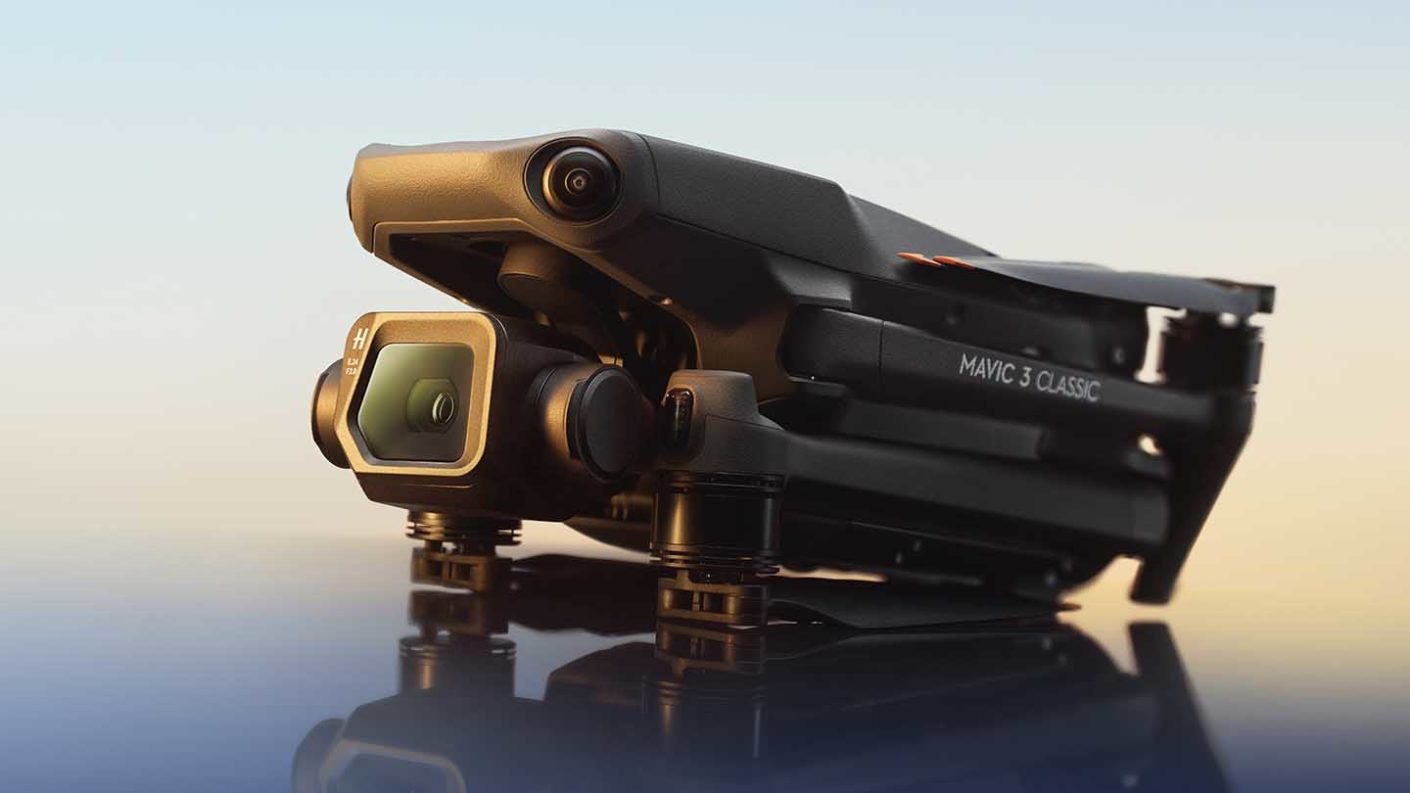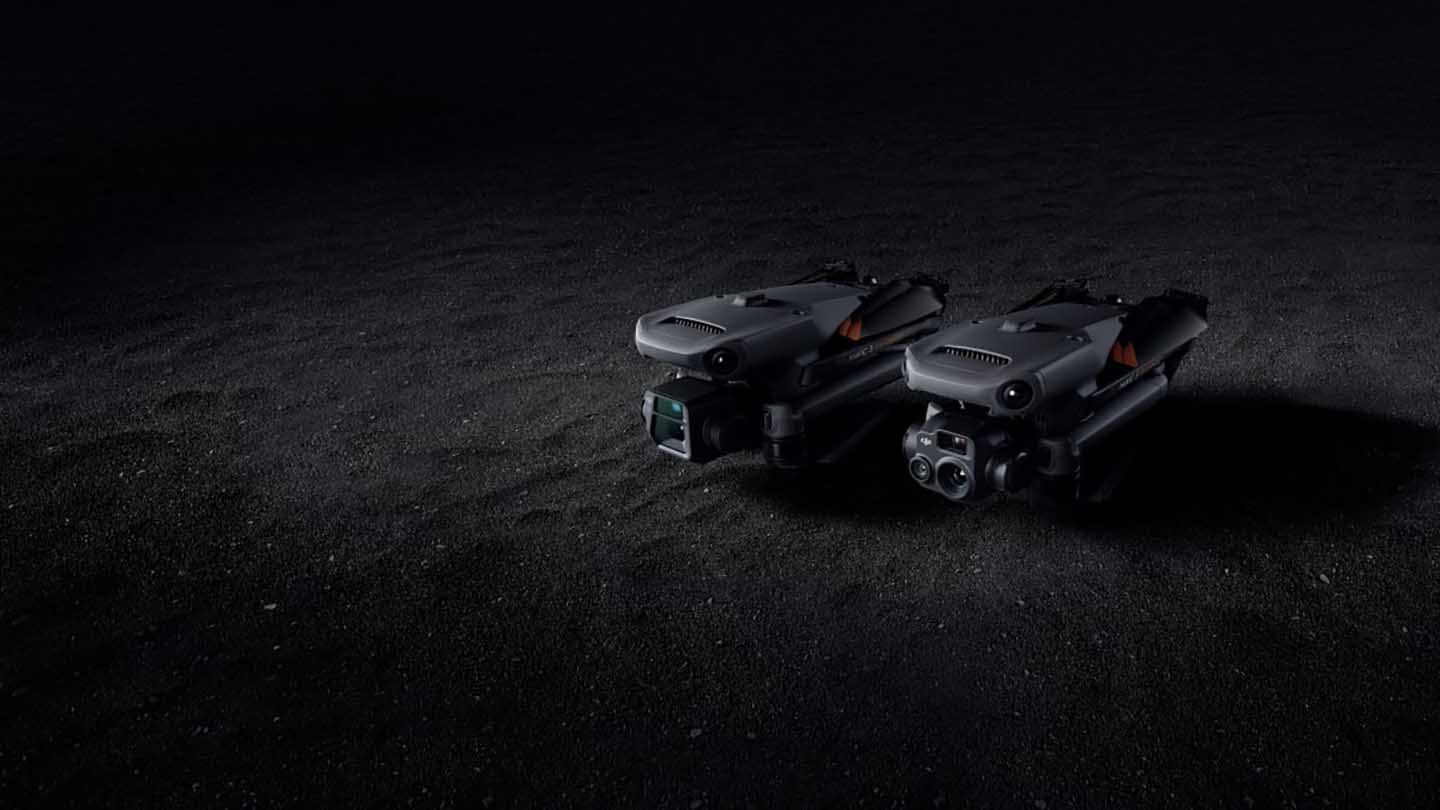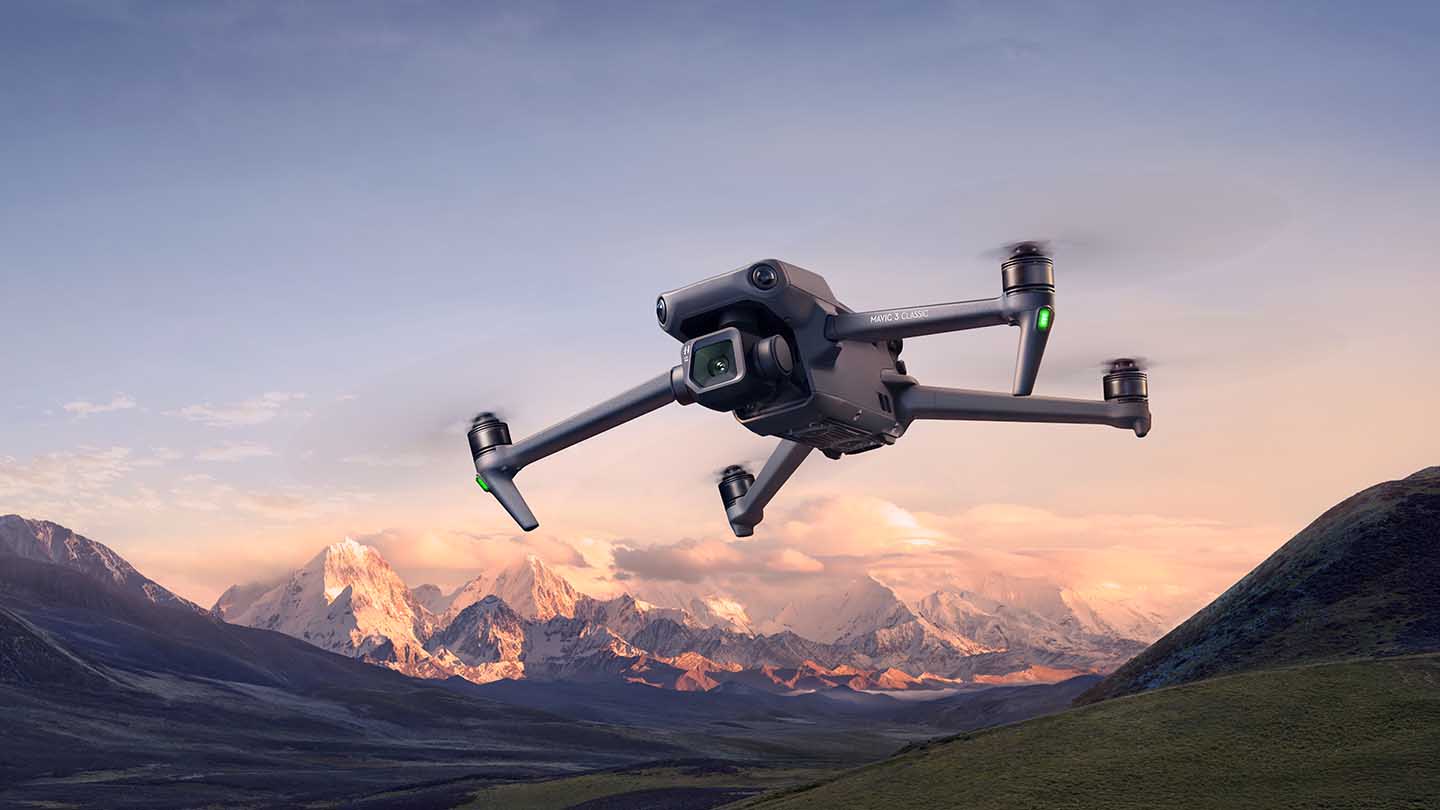As reviews go, this is something of a cop-out. The Mavic 3 Classic’s build is identical to the Mavic 3. I have the two drones side by side on the desk, and there is nothing to tell the two apart aside from the Pilots number tapped across the top and some mud on the Mavic 3, which I need to remove before the next flight.
A closer look shows that the logo on the arm is different, switching from Mavic 3 to Mavic 3 Classic; aside from that, the camera removes the Zoom lens that was mounted above the 24mm and the harness that holds the drone neatly together when being transported has been slightly remoulded to accommodate the slightly reshaped camera. Still, aside from that, I can’t see any differences.
This is unusual for DJI, who usually like to make one or two tweaks to the design of their drones after user feedback. However, here as there are no real changes, I think that speaks volumes to just how good the design, function and features of the Mavic 3 are.

For a full rundown of the build, check out the Build and Handling section of the Mavic 3 review; here’s a very quick run down.
A quick run-through is as follows.
The Mavic 3 Classic, as with the Mavic 3, features an array of sensors across its body, including two on the front, two underneath, two at the rear, and further upward and downward-facing sensors, giving a total of eight.
Again the small Drone sees the foldable propellers are of the twist fit style, making them easy to swap and change without needing tools. The prop arms fold out the same way as the Mavic 3; the entire form factor is essentially the same.
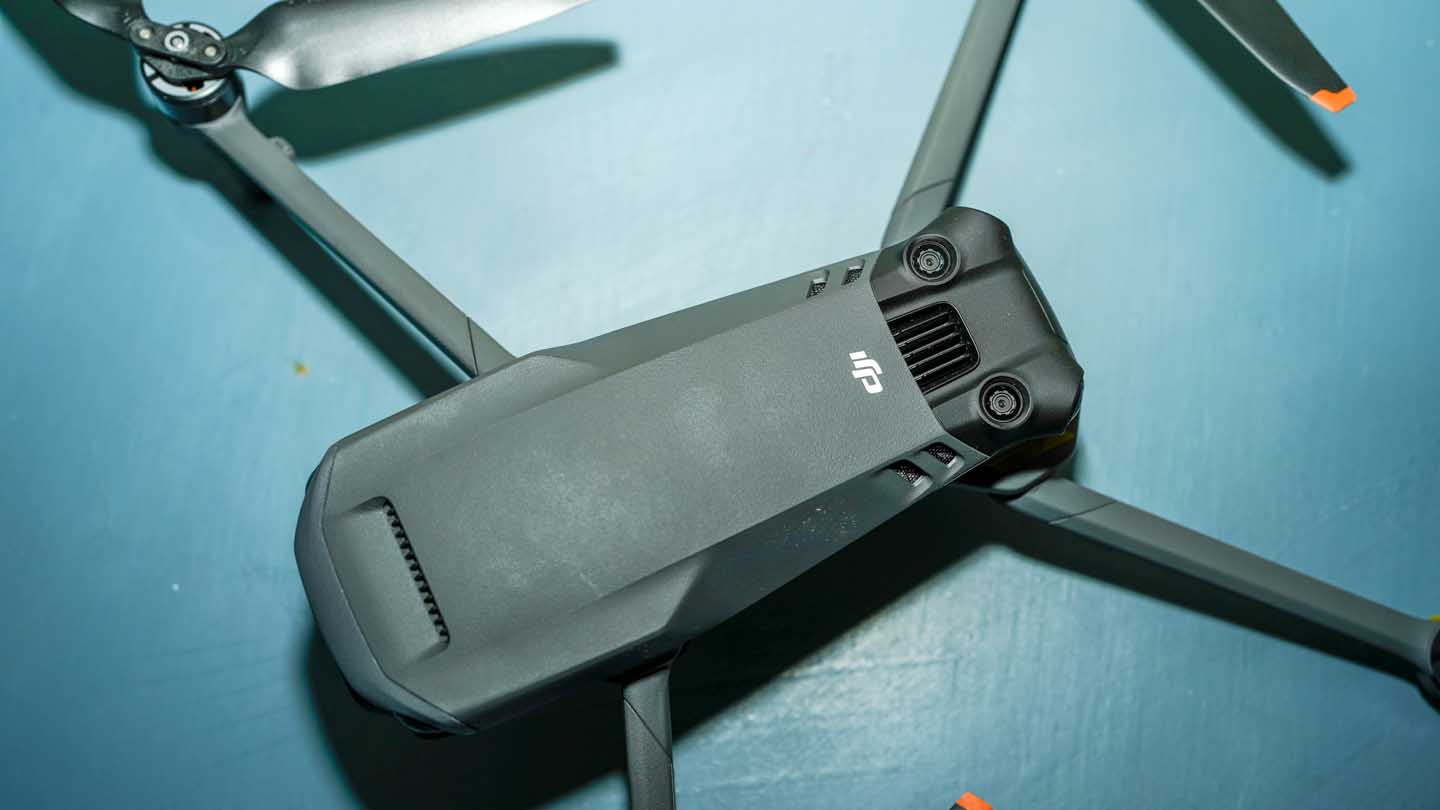
The battery slots directly into the Drone’s back and is securely in place, which can be released by pushing the two buttons on either side.
The USB charging dock uses DJI’s own 65W USB type-C plug and enables fast charging, as well as charging batteries through any laptop or standard USB Type-C plug, although charging times are slower.
It’s all about the cameras.
The Mavic 3 Classic is the latest Drone from DJI and Hasselblad, and it’s a real crowd-pleaser, essentially the Drone is identical to the more expensive Mavic 3 and the only real change is the camera, or to be more exact part of the camera.
While the Mavic 3 featured an impressive dual camera set-up, one high resolution and the other a zoom lens with 28x magnification, all contained within a single camera unit attached to the 3-axis gimbal, the Mavic 3 Classic features just the standard camera in a more classic set-up!
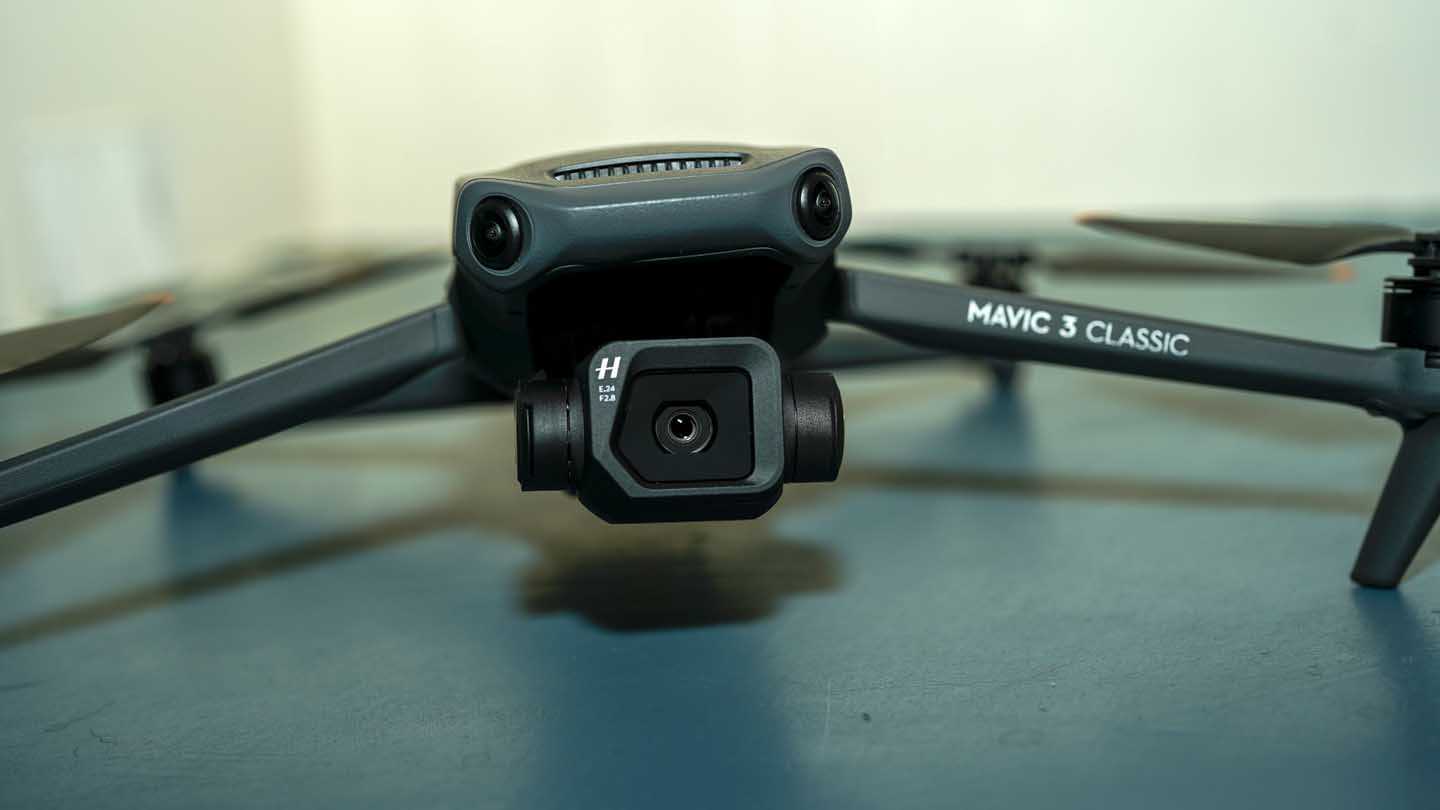
As with the Mavic 3, the Smart Controller and the DJI Fly app are the final elements that arrived with the Mavic 3 Classic, although there is a drone or standard controller option as well. The Smart Controller is worth the additional investment if you fly the Drone regularly or want to use the extended flight times fully.
The DJI Fly app is well laid out and runs through the basics when you first set up, and it’s a great resource for those just starting. While, the Mavic 3 Classic is quite a step up from the DJI Air 2S or Mini 3 Pro, its flight features and control would still mean that a beginner wouldn’t have too much difficulty flying and taking control of the Drone.
The Smart Controller or App, if you’re using a phone, gives you a clear visual interface of the Drone’s parameters and settings and a crystal clear live feed from the Drone. The Smart Controller also has direct control buttons such as the camera tilt, immediate start and stop recording and RTH.
The AirSense system is a great addition to the app. It picks up ADS-B signals from nearby aeroplanes and helicopters and alerts you to ensure that you land the Drone and move to a safer location. This feature works incredibly well, and you can track aircraft through the interface as a backup to your line of sight.
The video transmission is also excellent, with the 1080p feed transmitting at 60fps. Taking the Mavic 3 Classic out for a test flight is a great experience and identical in the air to the Mavic 3; they don’t just look identical in the air, they fly in the same way too.
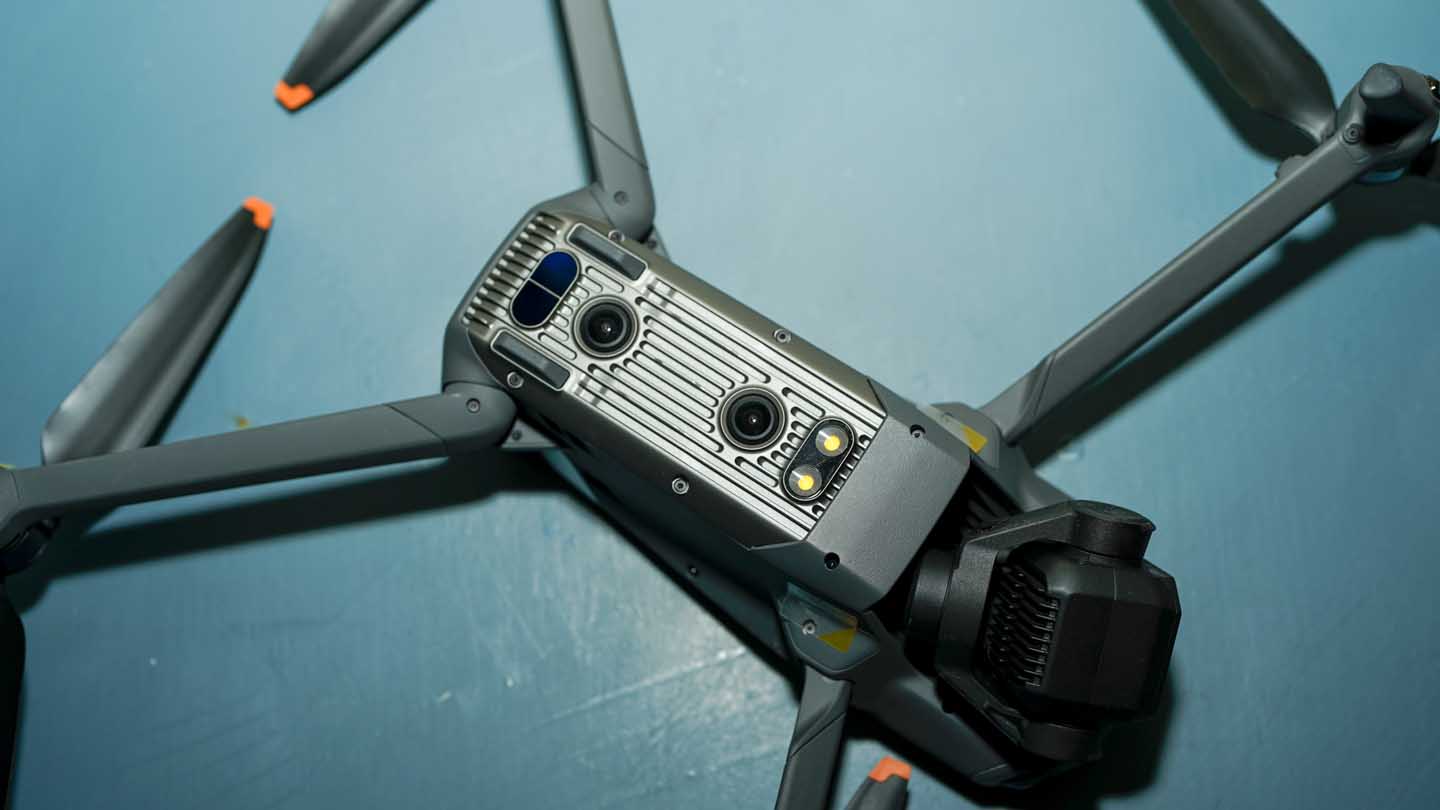
Taking a bit of a risk with the review sample, I took the Mavic 3 Classic on a quick woodland flight, and the Drone’s object detection and flight features did an incredible job after some adjustments. The sensors can be slightly oversensitive and restrict flight to a slow walking pace if objects are sensed which essentially means that drones stop mid-air beeping wildly at you.
Overall, the Mavic 3 Classic is the same fantastic Drone as the Mavic 3; a year may have passed, but there is still nothing to fault, and I’m not missing the addition of that zoom lens. In-flight, the Mavic 3 Classic is easy to use, has great flight features and has an amazing camera.


